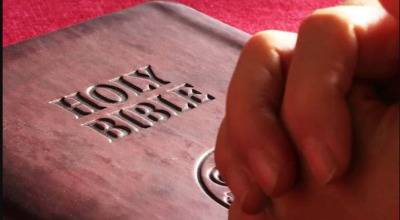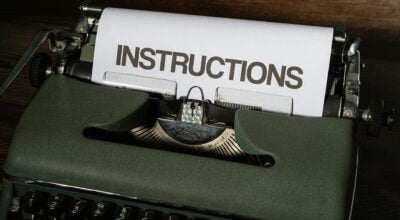A museum for the Book of Books
Published 6:16 pm Tuesday, September 4, 2018
When you think of museums, you tend to think of dead things — dead people, dead places, and in some ways, dead ideas. That’s especially true in Washington, D.C., where the various Smithsonians pay homage to everything from Teddy Roosevelt’s white rhino (National Museum of Natural History) to Elvis Presley’s youthful image (National Portrait Gallery).
The bygone perception presents a challenge for the city’s new Museum of the Bible, open since last November. How do you properly convey something living, active, and sharper than a two-edged sword within the confines of a museum, even an eight-story one?
First, let me give you some background in case you didn’t hear about the museum opening in the news. Hobby Lobby’s Steve Green and his family are the primary funders behind the project, and Green told Fox News that the museum is meant to educate, not evangelize: “There’s just a basic need for people to read the book. This book has had an impact on our world and we just think people ought to know it and hopefully they’ll be inspired to engage with it after they come here.” But at a cost of $500 million dollars, the museum is anything but basic. I’d say it does a good job of striking a balance between appealing to people of deep faith and capturing the interest of those with no faith.
Located in the shadow of the U.S. Capitol, the Museum of the Bible occupies prime real estate just off the National Mall. Constructed in 1922 to be a refrigerated warehouse space, the renovated building now stands sleek and modern. Forty-feet-tall, 2.5 ton bronze gates, etched with the first lines from Genesis in Latin from the Gutenberg Bible, mark an impressive exterior. Inside, the entry hall is anchored by marble floors and columns of Jerusalem stone. A glass atrium curves from ceiling to floor in the shape of a scroll.
Speaking of scrolls, we saw a bunch of them. Exhibit contributions on display represent the religious spectrum, from the Vatican Museum to the Israel Antiquities Authority. We looked at a Rosetta Stone replica and were wowed by interactive displays. We questioned live reenactors and came face-to-face with William Tyndale on a life-size screen. We saw an olive press do its thing and heard Yiddish.
One large open space has floor-to-ceiling shelves of Bibles in a myriad of translations. At the time we visited, there were New Testament translations in 1,525 languages. The full Bible was available in 671. Videos of the Bible being read by different worldwide people groups play overhead in that area. In a striking visual, a multitude of yellow bindings were placed among the shelves. They represent yet-to-be translations, the languages without one.
The museum’s third level, called the Narrative of the Bible, was a family favorite. There, you take a 30-minute walk with “Ezra” through the Hebrew Bible. The walk is literal. You visit different rooms where lights wow and special effects play out creation in 3-D. You feel the heat of the burning bush and hear Egyptians moan over the casualties of the 10th plague. You walk though the desert. You experience total darkness.
I especially enjoyed the fifth floor’s stunning religious art. Among the oil paintings, I was struck by Giovanni Martinelli’s “Youth Surprised by Death.” He painted it in the 1640s, but the message he depicted of the young woman with a skeleton and an hourglass behind her back is timeless. It was part of a temporary exhibit called “The Living Dead: Ecclesiastes Through Art.”
For those familiar with biblical inferences, the museum is a place to connect the clever dots. The name of the restaurant on the fifth floor? Manna. Type of food served? Mediterranean. Oh, and there’s another stop, too — The Milk + Honey Café.
Near the end we found the children’s area. Our granddarling made good use of the two-story Noah’s Ark playscape, while other children walked on water and caught fish. There’s a cool photo spot there, too. Illusions allow children to imagine themselves with Samson’s super strength as they push against two columns. The columns buckle before springing back in time for the next player.
Administrators say it would take days to really explore all the Museum of the Bible has to offer. I agree. Rushing through on a two-hour spree before lunch wasn’t the best idea our family has ever had. I hope to go back sometime soon.
Kim Henderson is a freelance writer. Contact her at kimhenderson319@gmail.com.





